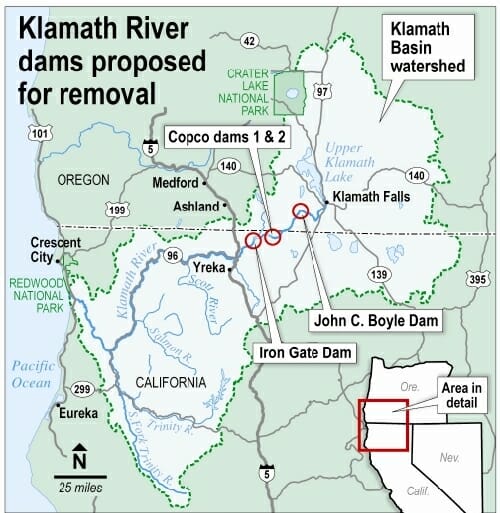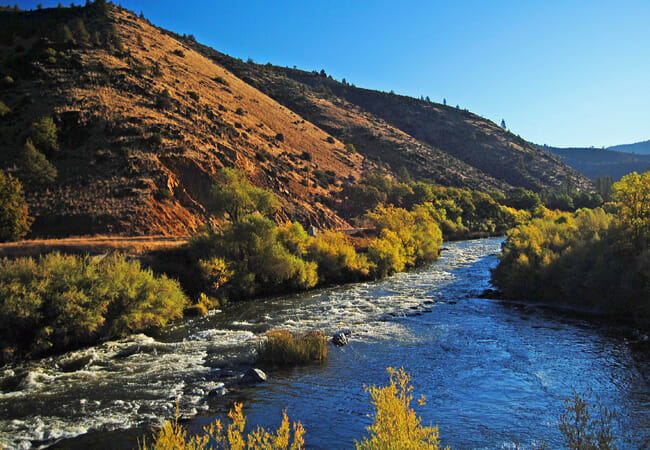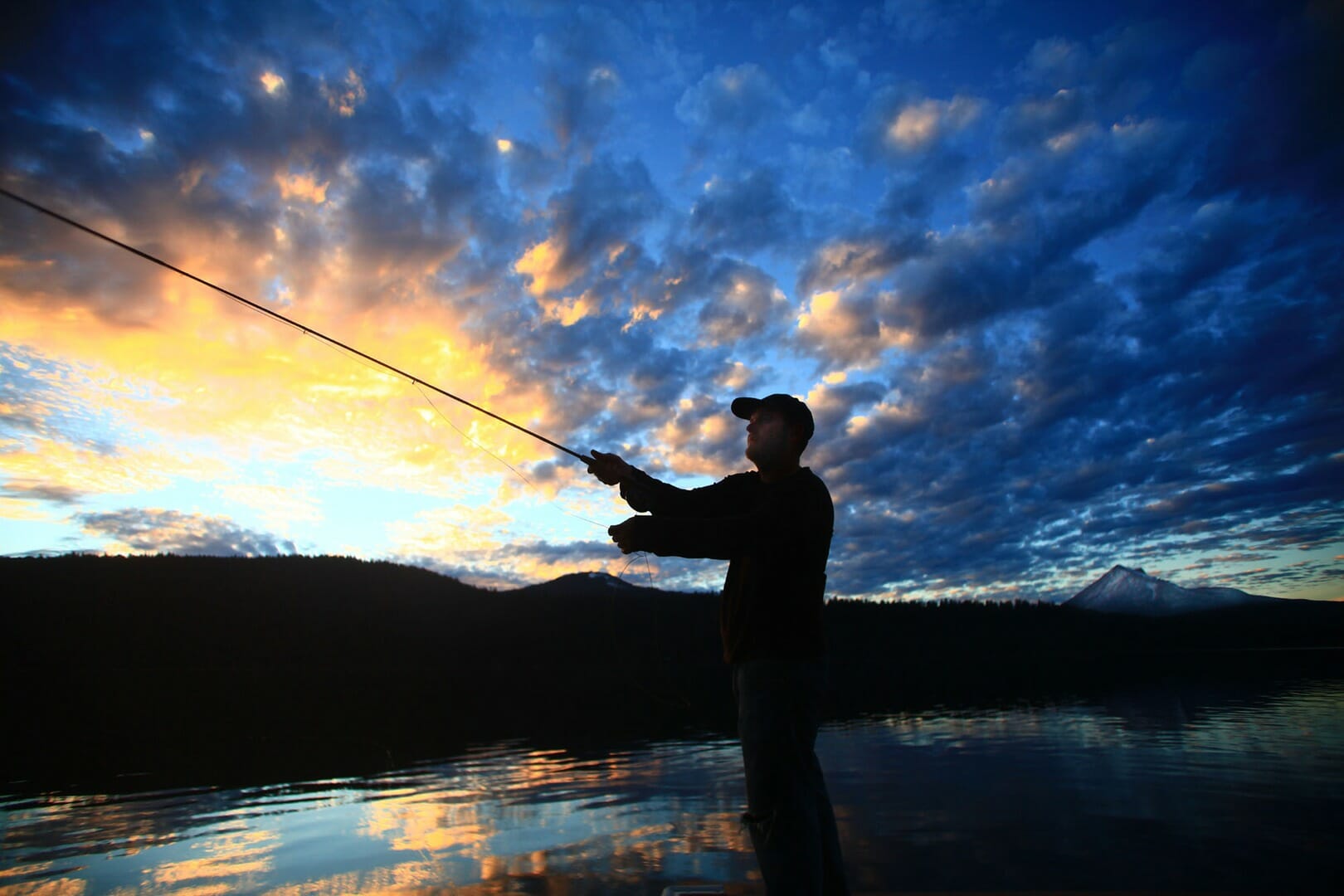The impacts of dams on anadromous (sea-run) fish are well documented. But today, many dams have outlived their usefulness, or become unprofitable or unsafe.
Removing such dams is now a proven way to recover salmon and steelhead populations. Trout Unlimited has supported the removal or retrofitting of dams on a number of high-profile salmon and steelhead rivers around the country, including the Penobscot in Maine, the Elwha in Washington, and the Carmel in California.
But TU’s biggest investment in dam removal is on the legendary Klamath River, straddling the border between California and Oregon.
On the Klamath, TU has played a lead role for more than a decade in a multi-government and -stakeholder campaign to reverse the decline of salmon and steelhead in this river through a suite of restoration actions, most importantly the removal of four antiquated hydropower dams owned by the utility PacifiCorp.
This campaign just passed a major milestone.

On Feb. 28, the Klamath River Renewal Corporation submitted a supplemental filing to the Federal Energy Regulatory Commission (FERC) in support of the KRRC’s application for “transfer and surrender” of the operating license for the Iron Gate, Copco I and II, and JC Boyle dams.
Removing these dams will restore access to more than 400 miles of steelhead spawning and rearing habitat in the Klamath Basin, restore more natural flow and sediment transport regimes, and reduce water temperatures and fish disease.
In its filing, the KRRC confirms there is sufficient funding committed to the dam removal project, as well as to “perform anticipated restoration and provide for robust risk protections.” You can read the KRRC’s submission here.
PacifiCorp submitted a formal letter of support for the KRRC’s filing on March 3 affirming its determination that decommissioning the four dams is in the best interest of the company’s ratepayers. In this letter, PacifiCorp said,
PacifiCorp continues to fully support the [Klamath Hydroelectric Settlement Agreement] as a better outcome for our electricity customers… Prompt action is necessary to maintain the project timeline and budget in support of this important project. PacifiCorp accordingly joins with the states of Oregon and California, the Yurok and Karuk Tribes, and other signatories to the KHSA to ask for an expedited decision on the license transfer application.

Previously, in 2016 the KRRC submitted license transfer and surrender applications to FERC, both of which are necessary for KRRC to take ownership of the Klamath dams, remove them, and restore the river. In 2018, the KRRC submitted its “Definite Plan” for the project to FERC. This plan is a comprehensive document that covers every aspect of the KRRC proposal, including plans for facilities removal, site remediation and restoration, estimated cost, and risk mitigation.
The Klamath dams could come down in 2022, if FERC approves the KRRC’s application relatively quickly.
Despite PacifiCorp’s strong commitment to off-loading the four Klamath dams, and the fact that these dams provide limited hydropower and no water supply benefits for agriculture or local communities, some folks think the dams should stay in place.
Recently, one news outlet supported the use of so-called “salmon cannon” technology to address the problems the Klamath dams pose for salmon and steelhead. TU’s steelhead scientist John McMillan breaks down the shortcomings of this approach—or any mitigation measures short of dam removal—in this opinion editorial in the Klamath Falls Herald & News.
A number of factors need to line up to make removing a dam a realistic possibility. On our best remaining salmon and steelhead rivers, when those factors do align, we should take advantage of it. The KRRC, with support from TU, PacifiCorp, and other stakeholders in the Klamath Basin, is doing exactly that.



